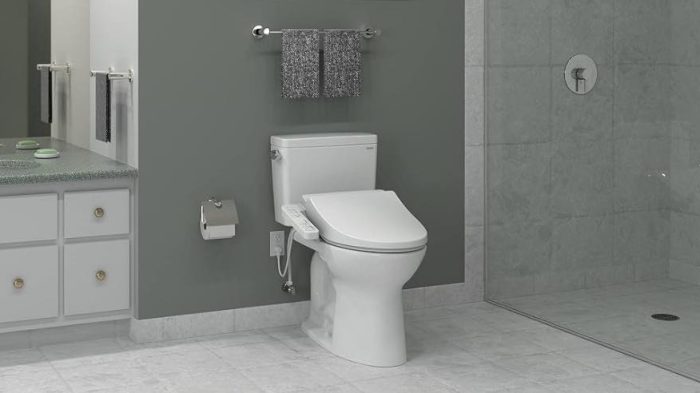Between You and Me: Toto offers a way to save trees and clean your bottom
By Leah S. Dunaief

Publisher
It isn’t often that you see a big picture of a toilet on a front page of The New York Times. But there was one on the Business section this past Friday, and it made me smile. The reporters had fallen in love with a bidet made by Toto, much as I had. Only I beat them, for I discovered this marvel when I visited Japan 10 years ago.
So what is a bidet? That was my question when I first saw the wash basin alongside the toilet bowl in a bathroom many years ago. I couldn’t understand why there would be two toilets and was enlightened by some patient soul to the bidet’s function. Although I am a fan of personal hygiene, it seemed like it provided a nice but unnecessary additional chore at the time.
Just FYI, the word, “bidet” is French for “pony” due to the straddling position adopted in its usage, according to the internet, which also told me that it is considered an indispensable tool in Spain, Italy and Portugal, in addition to France. Also devotees of its use may be found in Uruguay, Argentina, Paraguay, Egypt and Eastern Asia but rarely in sub-Saharan Africa, Australia and North America.
The electronic bidet featured in The NYT is built into the toilet seat, thus taking no extra room and requiring no additional movement on the part of the user. Many different controls make for a pleasant experience. Adjustable water pressure, adjustable temperature, direction of the spray, a heating element for drying the user’s bottom, a night light, a deodorizer, and even a knob for warming the toilet seat are common features. The control panel with these options can sit on the edge of the seat or hang on the wall. Or a wireless remote control may be employed.
The first electronic bidet, as opposed to a wash basin, I saw was in a restaurant in Japan. My travel companions waited a long time outside while I figured out how to use the feature. It was a life-changing moment for me and for them, too, after I re-emerged and told them what I had discovered. I was impressed to find bidets in Japanese department stores, hotels, the airport and in private homes on that trip.
When I returned home, I called our plumber, explained what I wanted him to install and had to work hard to persuade him that such a product existed. He told me that if he could find it, he would order two: one for me and one for him. I guess it was a life-changing moment for him, too.
“From an environmental standpoint, bidets can reduce the need for toilet paper. Considering that the average person uses only 0.5 liter (1/8 US gallon) of water for cleansing by using a bidet, much less water is used than for manufacturing toilet paper…Scientific American has also reported that if the US switched to using bidets, 15 million trees could be saved every year,” according to the internet.
In 1982, an actress in a pink floral dress drops paint on her hand and tries in vain to wipe it off with toilet paper. She then looks into the camera and asks, “Everyone, if your hands get dirty, you wash them, right?”
She then continues, “It’s the same for your bottom. Bottoms deserve to be washed, too.” This was a commercial, according to The NYT, from Toto for its Washlet, and started the electronic bidet offering. It took decades for the Japanese overwhelmingly to accept the innovation, but they certainly have now. More than 80 percent of Japanese households have them, and, as I discovered, they are found in all sorts of public places.
Now Toto is looking forward to a similar swell in the US market, which measures only 2.5 percent currently. Helped by the COVID-19 pandemic, with its shortage of toilet paper, Washlets here flow on.







